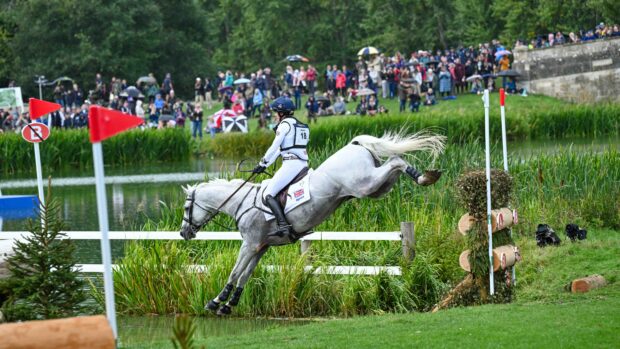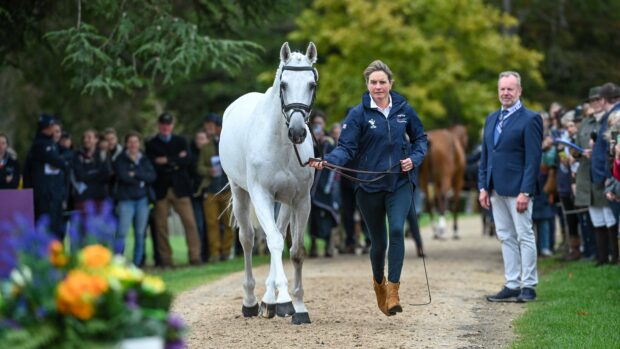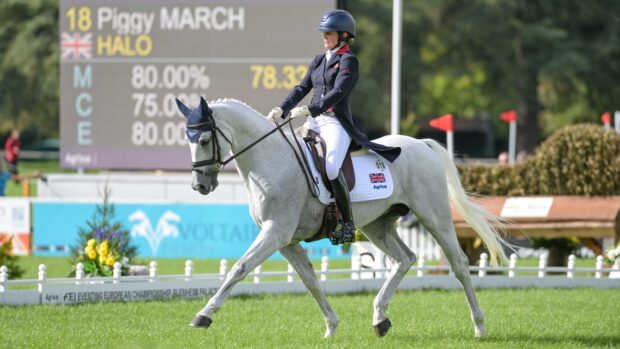A line of equidistant obstacles improve suppleness, softness and balance, as well as rider and horse rapport, explains top event rider Piggy March (neé French)
If you would like to learn from one of the best event riders in the world, here are some Piggy March training exercises for you to practice this winter.
Aim
Former eventing performance manager Yogi Breisner showed me this exercise. It ticks all the boxes as it works on both flatwork and jumping performance, with the ultimate aim of improving “togetherness” — the partnership between horse and rider.
Young horses often find it taxing at first. They may feel stiff while circling and performing serpentines around the obstacles, and they will probably put in uncomfortable jumps in trot.
However, over time, they will learn to accept bending and turning. By this point, they will have increased their suppleness, softness and balance, as well as their reaction times and trust. The rider should also be in better balance and have a stronger position.
The exercise
1. Build five verticals in a straight line with a one- stride (eight-yard) distance between each. The poles should initially be approximately 80- 90cm high for the trot exercise, but can be raised to as high as 1.25-1.30m for a canter exercise for experienced horses. Don’t use any lower poles or ground rails.
2. Once the horse has been lightly warmed up, trot through the poles in a figure of eight, a circle or a serpentine. There is no jumping at this stage. When the horse is supple and understanding the question in trot, you can then progress to canter for more experienced horses. When you reach the centre line of the grid, put in a simple change and, eventually, a flying change, constantly changing the canter lead.
3. When the horse is ready to jump through the grid, enter in trot and angle one of the fences. Then tackle two at an angle, say the second and fifth, followed by three, such as the first, third and fifth, in a zigzag pattern. Then complete the same exercise in canter. The next step is to jump down the five verticals. When the horse has jumped comfortably at the starting height, one or two can be raised — for example the second and fourth, then the first, third and fifth — so the question is always subtly different, keeping the horse’s mind engaged.
Tips and pitfalls
- The rider should keep himself straight, ensure his aids are clear and keep the horse underneath him.
- Work youngsters in trot. The canter exercise is tricky, so reserve it for experienced horses.
- Don’t progress to the next level until the horse is feeling comfortable.
- To avoid the exercise becoming too intense, exit the grid on occasions and ride a couple of circles.
For all the latest news analysis, competition reports, interviews, features and much more, don’t miss Horse & Hound magazine, on sale every Thursday.
You might also be interested in:
Take a virtual tour round event rider Piggy March’s beautiful Northamptonshire base

An arena with a view: check out Badminton winner Piggy March’s fabulous yard

Subscribe to Horse & Hound magazine today – and enjoy unlimited website access all year round
Horse & Hound magazine, out every Thursday, is packed with all the latest news and reports, as well as interviews, specials, nostalgia, vet and training advice. Find how you can enjoy the magazine delivered to your door every week, plus options to upgrade your subscription to access our online service that brings you breaking news and reports as well as other benefits.




